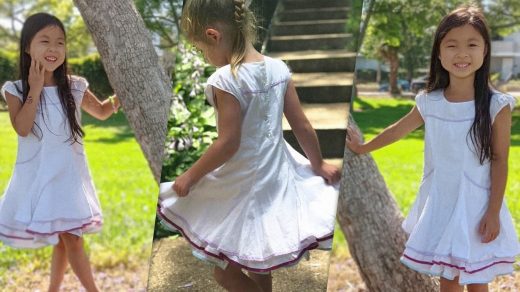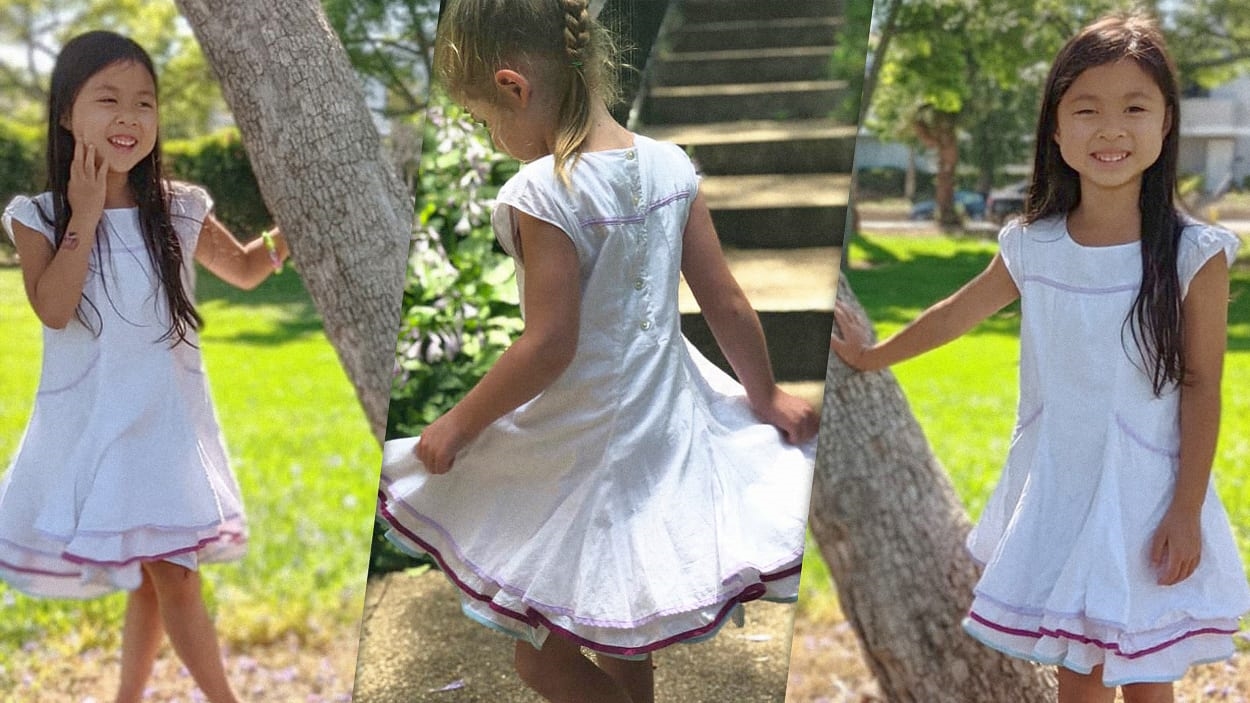It’s time to kick our $200 billion addiction to disposable kid’s clothing
As I’ve learned about fashion’s devastating impact on the planet, I’ve tried to be more responsible about my clothing choices—but shopping sustainably for my growing daughters has been much harder.
Lily, who is one, stains every single outfit she wears with spit-up. And Ella, who is seven, appears to spend much of her time rolling around in mud—at least from what I can gather from the clothes in her laundry hamper. Given how quickly they destroy or outgrow their clothes, it just doesn’t seem worth investing in durable, high-quality clothing for them.
Children’s clothing brands understand parents’ frustrations, which is why so many sell inexpensive garments you can discard after weeks or months. One study found that a third of parents throw kid’s clothes in the trash because they don’t know what to do with it, contributing to the 70 pounds of textiles each person throws out annually. This culture of throwaway clothing is accelerating climate change, because apparel manufacturing generates 8 to 10% of global emissions. And yet, the $200 billion global kid’s clothing market is growing faster than adult’s, expected to reach nearly $300 billion by 2030.
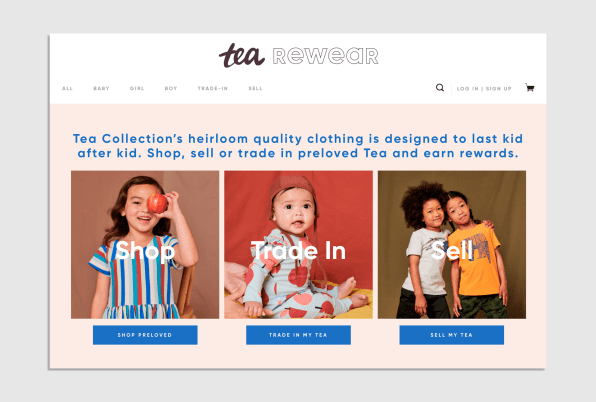
A wave of startups wants to nudge us in the right direction. They’re focused on extending the life of kid’s clothing, thereby lowering its environmental impact. Online thrift shops like Kidizen and ThredUp make it more efficient to buy and sell used clothes. Manymoons allows you to rent kid’s garments. And some brands, like Tea Collection, have their own resale programs.
And on some corners of the internet, sustainably-minded parents embark on their own grassroots efforts to keep kid’s clothes in circulation. One 14-year-old dress, from Tea Collection, has already been worn by 100 children, as parents have passed it on through online marketplaces—and it’s still in good shape. The ribbon-trimmed dress, with three layers of skirts that flutter in the breeze, offers a glimpse into what it will take to create a more eco-friendly kid’s clothing industry.
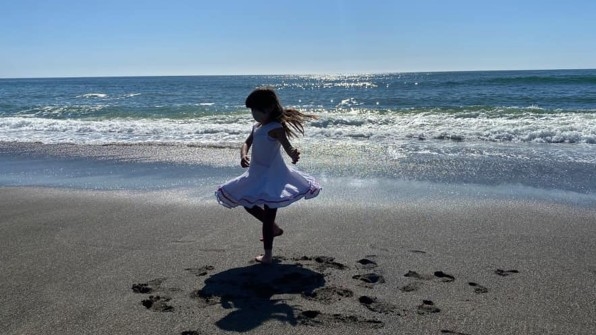
Parents will need to prioritize durability over convenience. This means buying high-quality kid’s clothes and taking care of them, so they can be handed down; or taking the time to source secondhand clothes. This approach inevitably means investing more time, money, or both—none of which comes easy to burnt-out, cash-strapped parents in today’s world. But, as I’ve discovered, technology is making it easier than ever for us to make better decisions around our shopping habits.
How kid’s clothes got so cheap
Not long ago, kid’s clothing was made to last. Dana Thomas, author of Fashionopolis: The Price of Fast Fashion and the Future of Clothes, shows me a picture of herself as a child on Zoom: She’s wearing a blue dress that her mother sewed for her. “I wore it for years, and I still have it,” she says. “I’m keeping it for my grandchildren.”
Thomas points out that, when she was growing up in the 1960s, fast fashion hadn’t entered the scene, and clothes were simply more expensive. Whether you purchased pre-made clothes in stores or bought fabric to sew them, they were an investment. On the other hand, they tended to be made of high-quality materials, like denim, corduroy, and durable cotton. “We bought denim jeans that were too long, and just cuffed them, so they would last years,” she recalls. “It took a lot to rip the knees, but when we did, we would just patch them up.”
Of course, this approach to clothing was far less convenient. Parents—usually overworked mothers—had to spend time mending rips and tears. Because kids owned fewer clothes, they needed to be washed more frequently, and parents had to scrub out stains from messy play and regurgitated food. And when spots didn’t come out, most families just made peace with imperfect clothes, because rushing out to get a new garment wasn’t an option.
Despite all this wear and tear, clothes tended to last so long that they could be passed from one child to the next. Thomas has saved many garments from her childhood for her daughter and nieces; some may even make it to the next generation.
But over the decades, kids clothes have become cheaper, mirroring broader changes in the fashion industry. By the time I was growing up in the 90s, synthetic materials had entered the market and the fashion supply chain had gone global, allowing brands to take advantage of low-wage labor in Asia. Now, as I’ve seen firsthand, fast fashion dominates kid’s clothing. Carter’s and Gerber sell bulk packs of cotton onesies for between $2 and $4 a pop. Target sells stretchy fashion-forward leggings for $6. Given how inexpensive they are, parents have no incentive to mend tears or scrub out stains from diaper leaks—they can just toss the garment in the trash.
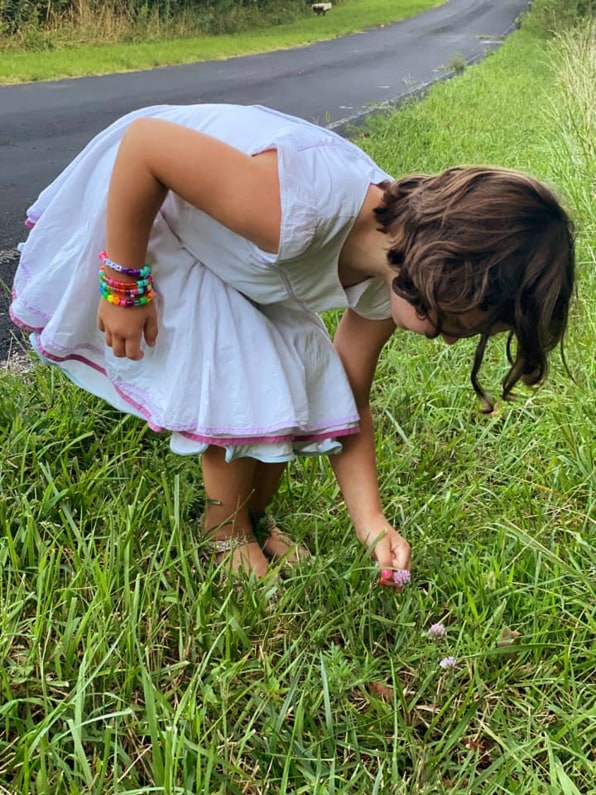
A better way
The question is: What will it take to ditch this disposable approach to clothes and go back to the way things used to be? The aforementioned dress, which has been worn by 100 children, offers some clues.
It was made by Tea Collection, a 20-year-old brand headquartered in San Francisco, known for its high-quality clothing that costs slightly more than fast fashion brands. ( Leggings start at $22 and dresses start at $29.) The brand has developed such a cult following that parents have created their own Facebook groups devoted to buying, selling, and trading Tea Collection pieces.
The dress in question, called the Santa Teresa dress, first came out in 2009. Serena Erenberg, of Harrison Township, New Jersey, first spotted the dress at a thrift store for $15 and thought it would eventually be perfect for her niece. But it was for a six-year-old child, and her niece was only two. So, she decided to offer it to other parents online on a Facebook group called Tea Insiders, devoted to fans of the brand, hoping to get it back by the time her niece could fit into it. “It was so beautifully made,” says Erenberg. “So, I decided to start this as a personal project.”
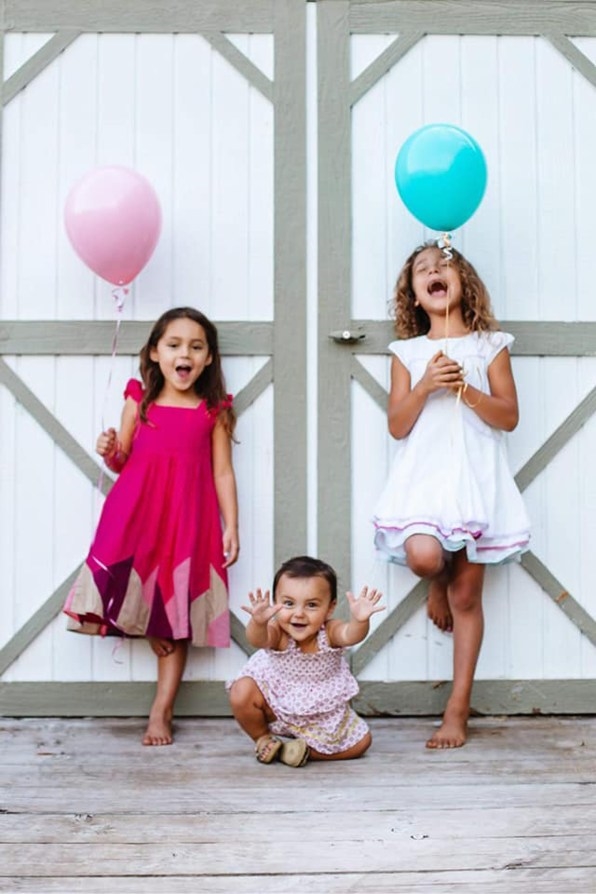
Over the past six years, the dress has traveled across the country to places like Chandler, Arizona, Milton, Pennsylvania, and Cincinnati, Ohio. Erenberg’s niece eventually got to wear it, but she decided to pass it on after she grew out of it. Laura Craveiro got it for her daughter to wear to her 6th birthday. Kindree Mieling’s daughter loved twirling in it and was reluctant to give it up. But the dress kept traveling and is now in San Jose, California.
While Erenberg’s project is exceptional, it’s also a case study, demonstrating what it takes to keep clothes in circulation. For one thing, Tea Collection clothes are known for being durable; this is why they are among the most popular kids brands on online thrift stores like ThredUp. The clothes are also thoughtfully designed to outlast trends; the traveling twirl dress, for instance, is classic and has wide appeal.
And, importantly, the internet has made it easier than ever to access a wide selection of used clothes, including the kinds of Facebook groups where parents shared this dress. As a child, Thomas exchanged clothes with family members, but today, it’s possible to find pieces online that are tailored to your child’s size and tastes. And if you take care of them, you might even be able to resell them or pass them on.
Lily recently had a growth spurt. Inspired by the story of the Tea Collection dress, I decided to buy a bunch of secondhand clothes on ThredUp rather than buying her new clothes at Target or Amazon. It ended up costing about the same. When the new packaged arrived, I was pleasantly surprised to find the onesies and dresses in good condition, ready for more wear. Now, the onus is on me to keep them in good shape, so we can pass them on to another family in time.
(10)

